Authors
Sandra Mendel,1 Karen Beattie,1 Jane Thompson,1 Robyn Vines,1 Kam Wong,1 Jannine Bailey,1 Krista Cockrell,1,2 Buck Reed,2 Tim McCrossin,1 and Ross Wilson1
1 Bathurst Rural Clinical School, School of Medicine, Western Sydney University, Bathurst NSW Australia
2 School of Science and Health, Western Sydney University, Campbelltown NSW Australia
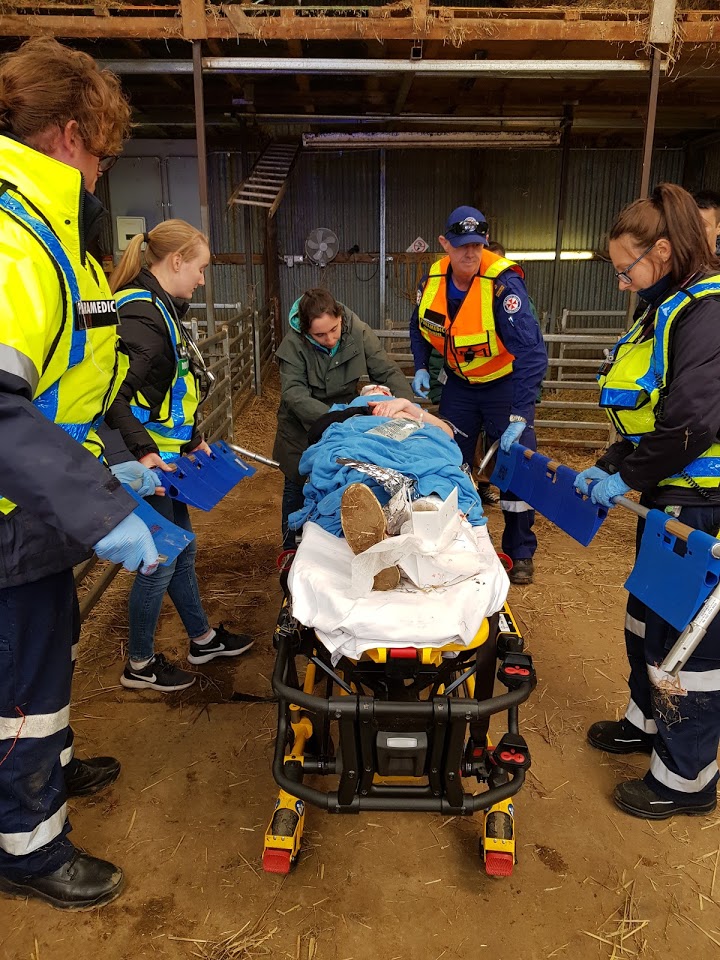
A farm accident simulation scenario in action: stabilizing the patient and preparing them for transfer to hospital.
Photo credit: Jane Thompson
Collaborative care is the gold standard in effective patient care.1 This is particularly important in the rural context where teams are smaller and there is typically more interaction with colleagues from other professions in the delivery of health care. Rural generalist medicine is shaping up to become the cornerstone of medical care delivery in rural Australia. A rural generalist is described as a “medical practitioner who is trained to meet the specific current and future healthcare needs of Australian rural and remote communities, in a sustainable and cost-effective way by providing both comprehensive general practice and emergency care and required components of other medical specialist care in hospital and/or community settings as part of a rural healthcare team.”2 Such an approach of targeting rural practitioner’s skills to the needs of the community they serve aligns with the World Health Organization’s (WHO) definition of social accountability in medicine.3 Equally important is that rural generalists operate using a multidisciplinary team care approach, drawing on the skills and expertise of clinicians from other professions to provide effective patient-centered care.4
One challenge lies in how to teach effective teamwork and collaboration skills to medical students to ensure they are workplace ready. At the Bathurst Rural Clinical School (RCS) of Western Sydney University’s School of Medicine, we strive to nurture an interest in rural practice in our cohorts of medical students who complete an extended clinical placement in the region and are accountable for contributing to an increase in the rural medical workforce. Students are typically “highly urbanized” and have little prior exposure to life outside of metropolitan city living. The RCS curriculum aims to provide a positive and authentic rural experience and at the same time correct any incorrect notions about what it is like to live and work in a rural community. The end result, ideally, being to foster rural practice aspirations in students, or at least open them up to the possibility of a future rural career by giving them a lived experience and removing the element of the unknown.
In addition to being accountable to rural communities in terms of increasing numbers in the rural medical workforce, the RCS also holds an accountability in terms of the quality and ability of these medical graduates. It is not simply sufficient to provide our rural communities with a medical practitioner; we also need to take responsibility for ensuring that our rural communities are provided with the best possible practitioner capable of working with the local multidisciplinary health team to deliver the best possible care to rural patients.
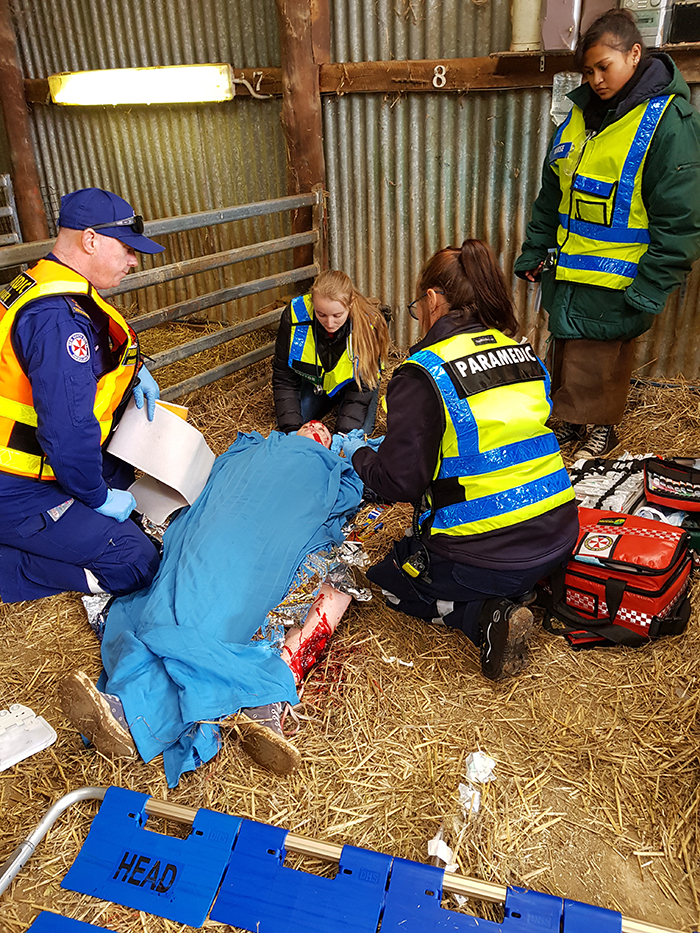
A farm accident simulation scenario in action: stabilizing the patient and preparing them for transfer to hospital.
Photo credit: Jo Halloran
Our answer to this is RIPL -- Rural Inter-Professional Learning -- which has recently been integrated into the curriculum of the Bathurst RCS. RIPL is a simulation teaching session that involves several members of the interdisciplinary team; including, but not limited to medical, nursing, social work, and paramedicine students. Students are supported through the scenarios by a multidisciplinary team of facilitating clinicians. Throughout the teaching session, students rotate through a range of complex scenarios that are designed with both medical and social factors in mind to expose students to situations they would be expected to encounter at work in a rural community. Some scenarios are more commonly expected encounters (e.g. an elderly patient with delirium/confusion or a patient who has experienced a stroke) whilst other scenarios may be encountered less frequently but are nonetheless important to working in a rural setting (e.g. a farm quad bike accident). The students are supported to act out the scenarios in full, including travel from the home setting (or other external setting) to the local hospital for admittance. Students practice their skills in clinical handover throughout the scenario with the different health professionals as would be required in a real-life context. Where relevant, students are encouraged and supported to work together as a multidisciplinary team to provide necessary care in the home, thereby preventing hospitalization; the question “to hospitalize or not to hospitalize?” provides an important reflection for students to give consideration to the distance to the nearest facility and what that means for the patient and their family, whilst also considering the need for hospitalization from the viewpoint of avoiding unnecessary hospitalization. This then leads to a consideration of the challenges around coordinating necessary services outside of the hospital environment when working in the rural setting.
Student reflections:
"As a result of this experience, I have more respect towards other disciplines and their specialties."
"Paramedics and nurses take histories in a very similar way to doctors, so I need to take on board what they tell me to avoi overlap."
"Today drummed "social aspects" into my head, so I'll always be assessing the social factors now."
The end goal, or RIPL effect, of inter-professional education is to create a health workforce with improved levels of teamwork, collaboration, knowledge sharing, and problem solving, eventually leading to better client and patient outcomes in the health care setting. This type of shared learning has the potential to deepen the understanding of the layers of care involved in the patient experience and how professional roles and responsibilities complement each other. An informal evaluation that has been conducted to date supports this notion, as evidenced by student and facilitator feedback. Students have described an increased understanding of the role different health professionals play, both in general and as part of the multidisciplinary team. A greater awareness of the importance of social factors was also mentioned.
Facilitator reflections:
"From my observations of this scenario, I think the students will better be able to draw on each other's skills to meet patient needs in challenging settings such as rural and remote communities."
"Technical skills are only half the story! They learnt how important a team was."
"This RIPL provides a foundation for the students to build on further interprofessional collaboration in their career."
Other important learnings were around communication with the patient and the other health professionals, and how best to collaborate as a team to provide the best care to the patient, regardless of the setting. Of particular importance here from the medical student perspective, was their recognition that within the team care approach, there were critical times when they as the doctors needed to take a step back and allow the other members of the team (e.g. paramedic or nurse) to lead that aspect of the patient’s care. This awareness and recognition of the skillset and strength that these other professionals bring to the team is an important learning objective of RIPL.
This early feedback demonstrates that inter-professional education activities are a valuable addition to a medical curriculum to foster an understanding and appreciation of the multidisciplinary health care team in medical students. However, informal feedback such as this is not sufficient for firming up the evidence base around inter-professional learning in the rural context. Others have highlighted the rather limited evidence base and have called for more rigorous evaluation of inter-professional education programs to expand the evidence base and show lasting impact beyond the immediacy of the teaching session.5 In light of this, a structured formal evaluation of the RIPL program is currently underway to add to the growing evidence base around inter-professional education.
In conclusion, the incorporation of an undergraduate rural interprofessional education program such as RIPL can enhance medical students’ awareness and recognition of the roles other health professionals play in delivering quality health care to rural patients. This can lead to graduates who are equipped to operate effectively within a multidisciplinary team environment to provide effective patient-centred care to rural patients.
Works Cited
Holmqvist M, Courtney C, Meili R, Dick A. Student-run clinics: Opportunities for interprofessional education and increasing social accountability. Journal of Research in Interprofessional Practice and Education. 2012 Aug 29;2(3).
National Rural Health Commissioner. The Collingrove Agreement. Canberra: Australian Government, 2018. Available from: https://www.health.gov.au/internet/main/publishing.nsf/
Boelen C, Heck J. Defining and measuring the social accountability of medical schools. Geneva: World Health Organization, 1995. Available from: https://apps.who.int/iris/handle/
Murray, R. Cairns Consensus Statement on Rural Generalist Medicine. 2013. Available from: www.acrrm.org.au/docs/default-source/
Anderson ES, Kinnair D. Integrating the assessment of interprofessional education into the health care curriculum. Journal of Taibah University Medical Sciences. 2016 Dec 1;11(6):552-8.
Author bios
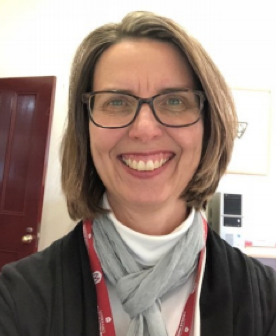
Dr. Sandra Mendel is a Senior Lecturer in Rural Health at the Bathurst Rural Clinical School and a General Practitioner in Orange where she has been a Rural Generalist for the last 20 years.
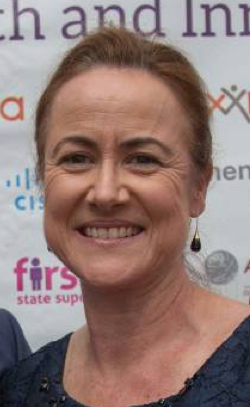
Karen Beattie is a Critical Care Nurse and Associate Lecturer in Clinical Skills Education at the Bathurst Rural Clinical School.
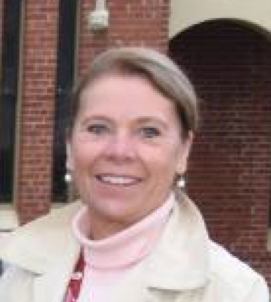
Jane Thompson is the Rural Program Coordinator at the Bathurst Rural Clinical School. She is committed to growing the future rural health workforce.
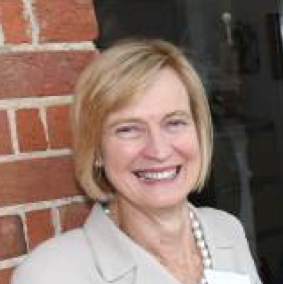
Dr. Robyn Vines is a practicing Clinical Psychologist and a Senior Lecturer in Mental Health at the Bathurst Rural Clinical School.
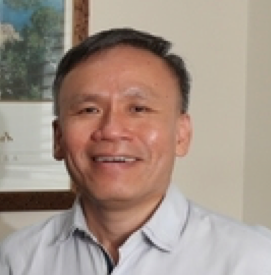
Dr. Kam Wong is a local General Practitioner and a Senior Lecturer in General Practice at the Bathurst Rural Clinical School.

Dr. Jannine Bailey is a rural health researcher and Senior Lecturer in Rural Health & Research at the Bathurst Rural Clinical School.
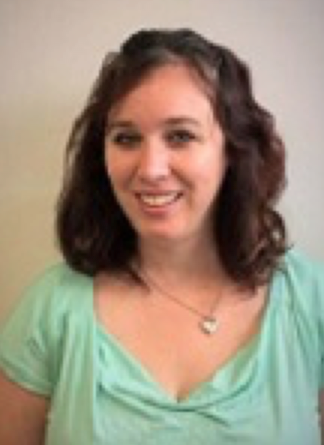
Krista Cockrell is a Research Officer at the Bathurst Rural Clinical School and Casual Academic at Western Sydney University. She is a trained paramedic and has practiced in both the U.S. and Australia in a range of emergency and industrial environments.
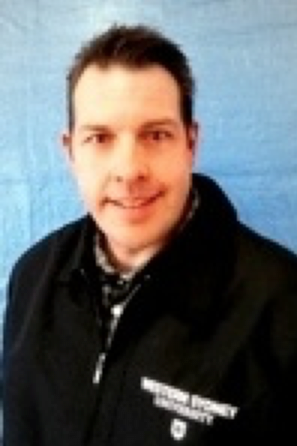
Buck Reed is an Associate Lecturer in Paramedicine and a paramedic who has practiced for more than 20 years in various areas of pre-hospital care including event medical services and industrial paramedicine.

Associate Professor Tim McCrossin has been a consultant paediatrician in Bathurst for more than 20 years and is the Clinical Dean for the Bathurst Rural Clinical School.
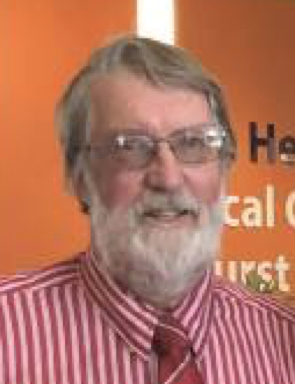
Professor Ross Wilson is the Director of Rural Health at the Bathurst Rural Clinical School and has been a General Practitioner in Bathurst for more than 30 years.


